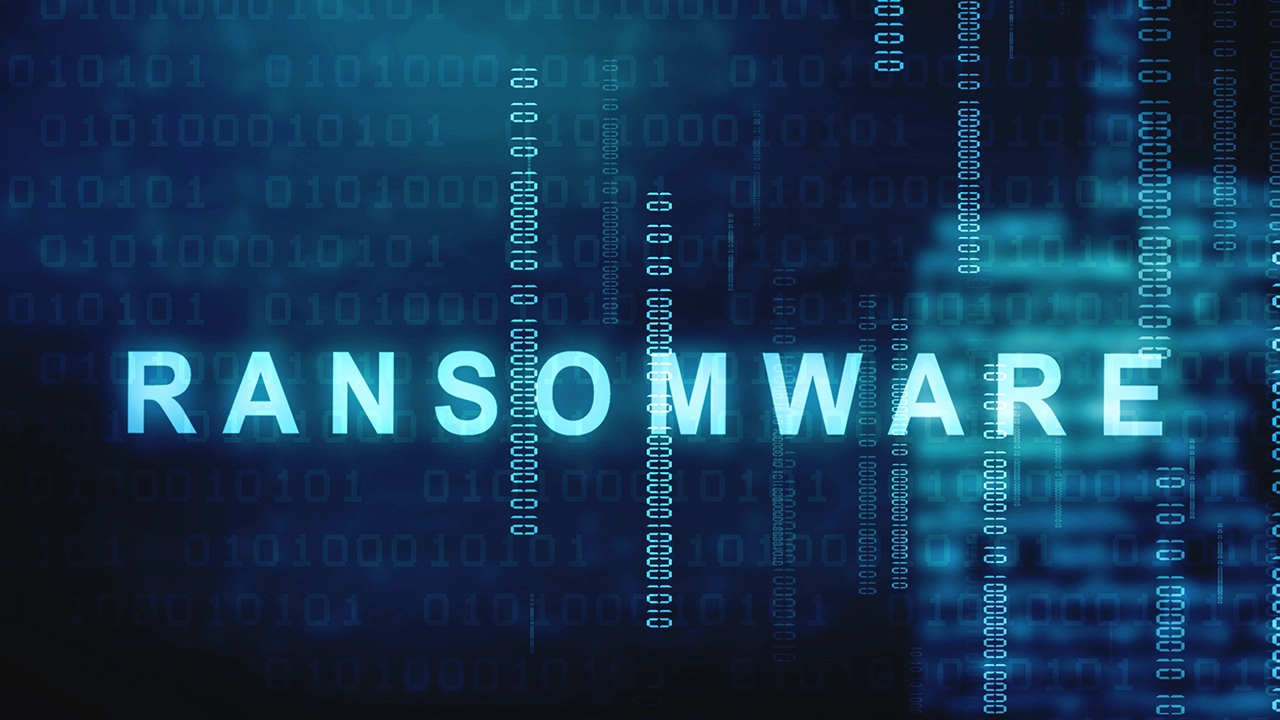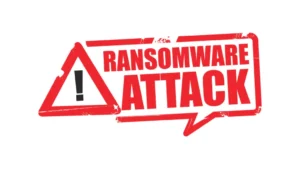Index
- Introduction
- What is Ransomware?
- What are the different Types of Ransomware?
- How Ransomware Attacks Happen?
- What are the effects of Ransomware on Businesses?
- What are the common Ransomware Targets?
- Consequences of Ransomware Attacks
- How to prevent Ransomware Attacks?
- Ransomware Protection Strategies
- How to detect Ransomware Attacks?
- How to remove Ransomware?
- Case Studies of Notable Ransomware Attacks
- Conclusion
- FAQs
Definition of Ransomware
Ransomware is infamous for locking away data and then asking for a ransom to unlock it. Your ability to access this data will be limited until you provide payment to the person behind the attack. This payment is typically made using digital currency. These incidents are widespread and can impact individuals, businesses, and governmental bodies. Attackers demand payment in cryptocurrencies so that they can stay anonymous.
Importance of Ransomware Protection in Cybersecurity
Ransomware protection has become necessary because of the increase in remote work. Strategies involve planning, security measures, anomaly monitoring, efficient data restoration, regular plan testing, and employee cybersecurity education. These steps mitigate risks, safeguard data, and prevent costly ransomware attacks in enterprises.
What is Ransomware?
Explanation of Ransomware Attacks
The malicious software encrypts information in ransomware incidents. Following this, the perpetrators request payment to decipher the data. Ransomware first came onto the scene in 1989. Since then, it has transformed into a major cyber problem that impacts businesses globally.
Overview of Ransomware Encryption Techniques
Ransomware locks your data by encrypting it. Subsequently, a demand for payment emerges as the sole key to unlocking your files. Leveraging robust encryption methods renders modern types inaccessible. Furthermore, they exploit an additional tactic of stealing valuable data from their victims. Notable variants include CryptoLocker, WannaCry, Ryuk, and Petya.
Common Targets of Ransomware Attacks
Any company remains susceptible to ransomware attacks. However, it frequently focuses on specific industries. The top targets in 2023 comprised It is imperative for organizations to ensure their safety by implementing practices such as regular patching and maintaining backups. Moreover, they must also use early detection tools.
What are the different Types of Ransomware?
Various forms of ransomware present distinct characteristics and attack methods. The most common types of ransomware include:
1.Encrypting Ransomware
A decryption key makes the victim’s files and data inaccessible with this type of encryption. In exchange for providing the victims with the said key, a ransom is demanded.
2.Locker Ransomware
The Locker ransomware actively locks out victims from their systems. Thus, they make files and applications unattainable. It strategically showcases a lock screen that prominently features the ransom demand. Typically, this even includes an urgency-inducing countdown.
3.Scareware Ransomware
Scareware, through tactics like pop-up alerts or counterfeit software warnings, deceives users. It falsely asserts their computer is infected with malware. Subsequently, it prompts them to pay for a resolution.
4.Doxware (Leakware) Ransomware
Unless the ransom is paid, Doxware presents a menacing threat. It could potentially leak sensitive personal or company information. Due to its involvement in possibly exposing confidential data, it poses an immense risk.
How Ransomware Attacks Happen?
Delivery Methods
Ransomware attacks are typically delivered through various methods, including:
- Phishing Emails: Deceptive emails trick users into clicking on malicious links or downloading infected attachments.
- Malicious Websites: Malicious code silently downloads onto a user’s device when visiting compromised websites.
- USB Baiting: Cyber attackers may strategically position infected USB drives in public areas or deliver them directly to specific targets for infection.
Exploiting Vulnerabilities
Ransomware exploits vulnerabilities in:
- Software: Outdated software with unpatched security flaws.
- Networks: Weak network security measures that allow unauthorized access.
- Human Error: Lack of cybersecurity awareness leads to wrong actions that enable ransomware attacks.
What are the effects of Ransomware on Businesses?
Ransomware in cybersecurity induces operational halts and incurs revenue loss. Paying substantial ransoms fails to guarantee data recovery. Thus, trust and finances suffer significantly. Further exposure not only compromises the firm’s reputation but also causes a loss in customer loyalty. Attacks causing data breaches result in the leak of sensitive information, thereby damaging relationships. Ransomware in cybersecurity incidents is further burdened with regulatory fines for compromised data.
What are the common Ransomware Targets?
Different types of ransomware encrypt business files. This action triggers effects such as shutdowns and subsequent revenue losses. However, there is no guarantee of data recovery even if businesses choose to pay the demanded ransoms. Exposure to such breaches damages reputations by inciting customer disloyalty. Additionally, data leaks from these breaches lead not only to strained relationships but also to legal fines. This underscores the grave consequences of ransomware in cybersecurity. It is far more than a mere cybersecurity threat; it presents an existential risk.
Consequences of Ransomware Attacks
The various effects of different types of ransomware are as follows –
●Financial Losses
Businesses can experience significant financial losses as a result of ransomware attacks. They must make ransom payments. Plus, productivity may be lost, remediation costs can mount up, and there is the potential for revenue decline. Affected organizations typically have to give an average ransom of $170,000.
●Data Breaches and Privacy Violations
Preventing ransomware attacks is essential as they cause data breaches and privacy violations. They lay bare sensitive information to cybercriminals. This exposure can precipitate identity theft. Furthermore, businesses that neglect the proper protection of customer data might face legal implications.
●Reputational Damage
Ransomware attacks can inflict long-lasting effects on its brand image. The resultant loss of trust ruins market perception. Consequently, it impacts competitiveness and revenue.
●Legal and Regulatory Consequences
Ransomware can subject businesses to legal and regulatory repercussions, particularly when customer or employee data suffers compromise.
How to prevent Ransomware Attacks?
1.Keep Software and Systems Updated
Consistently updating our software and systems is imperative. It mitigates security risks and enhances overall system resilience – a proactive measure that patches vulnerabilities cybercriminals exploit for different types of ransomware attacks.
2.Implement Robust Security Measures
One must use firewalls, antivirus software, and anti-malware solutions for preventing ransomware attacks. They help safeguard systems from malicious ransomware threats. These tools detect potential attacks and prevent execution and propagation of ransomware Moreover, they block the execution of such malware, thus fortifying against any strong attack.
3.Educate Employees About Phishing and Social Engineering Tactics
Conduct regular training and simulations to identify phishing emails and recognize social engineering tactics. Preventing ransomware attacks hinges on employee awareness.
4.Regular Data Backups and Testing
Regularly backup critical data. Ensure its secure storage either offline or in the cloud. Regularly test these backups’ effectiveness. Restore them to verify their functionality in case of a potential ransomware in cybersecurity attack.
5.Use of Ransomware Decryption Tools
Exploring the use of ransomware decryption tools provided by cybersecurity experts proves worthwhile. These resources can decrypt files affected by specific types of ransomware.
Ransomware Protection Strategies
●Endpoint Security Solutions
Employ endpoint security solutions such as antivirus software. You can also utilize EDR tools for ransomware protection. By doing so, one can effectively identify and stop ransomware threats.
●Network Security Measures
Robust network security measures, such as the implementation of intrusion detection systems, network segmentation, and firewalls, actively monitor and control network traffic. They detect potential ransomware activity. Network security crucially prevents the lateral movement of ransomware in cybersecurity.
● Cloud-Based Security Solutions
Use cloud-based security solutions for ransomware protection. They offer potent protection against ransomware attacks on your stored cloud data. Encryption, access controls, and monitoring for the sake of safeguarding data integrity and availability are integral aspects of these security measures.
●Incident Response and Recovery Plans
For ransomware protection, develop comprehensive incident response and recovery plans. These blueprints should meticulously outline the necessary steps in case of a ransomware attack. Furthermore, it is important to conduct regular drills. This action ensures that the incident response team can swiftly recover and minimize downtime.
How to detect Ransomware Attacks?
Using signature-based matching of known malware, businesses can indeed detect ransomware attacks. However, they often grapple with newer variants. They struggle to identify and neutralize them. Behavior-based methods offer an effective solution. They monitor unusual activities such as file encryption and network changes, then compare these actions to historical data. Moreover, abnormal traffic detection excels at spotting irregularities in network behavior.
How to remove Ransomware?
Disconnect the infected device from the internet to stop ransomware dissemination. Subsequently, a virus scan is done using anti virus or EDR software. The aim is to pinpoint and isolate malicious files. As for encrypted data, employ specific variant-tailored ransomware decryption tools for their restoration. Reach out to security experts for guidance on file decryption, root cause analysis and incident investigation.
Case Studies of Notable Ransomware Attacks
Here are case studies of famous ransomware attacks –
● LockBit
In 2023, LockBit ransomware encrypted files belonging to the UK’s Royal Mail postal services and demanded 0.5% of their revenue for decryption.
●WannaCry
WannaCry was launched in May 2017. It infected computers by exploiting Microsoft’s Server Message Block’s EternalBlue vulnerability. It conducted one of the largest attacks to date. This significantly impacted numerous global organizations.
●Petya/NotPetya
Starting in 2017, NotPetya infected systems by permanently encrypting the master boot record of Windows computers. The exploit it utilized was EternalBlue. This led to significant financial losses and provoked allegations of political motivation against Ukraine.
●Ryuk
In 2019 and 2020, the prevalent Ryuk ransomware spread through phishing emails. It demanded high ransom amounts. In some cases, it exceeded $300,000. This malicious act inflicted substantial global damage. Numerous companies and organizations suffered its detrimental effects.
● REvil (Sodinokibi)
It is actively engaged in a multitude of high-profile attacks. Travelex and GenRx Pharmacy fell victim to this ransomware group’s targeting. They demanded substantial sums in ransom and issued threats to release stolen data if their conditions were not met.
Conclusion
Ransomware inflicts financial losses and data breaches. In recent years, the recovery costs have doubled. The COVID-19 pandemic has escalated these attacks, especially within healthcare. For preventing ransomware attacks, proactive measures are essential. Access control, regular backups, effective key management, and comprehensive user training all play vital roles. Advanced defense mechanisms prove crucial as attacks continue to evolve. Ongoing research plunges into the exploration of innovative detection and prevention methods. It underscores behavioral patterns. Partnering with cybersecurity experts like 63SATS ensures a resilient defense against the evolving menace of ransomware. Stay secure, stay protected with 63SATS – your trusted cybersecurity solutions provider.










